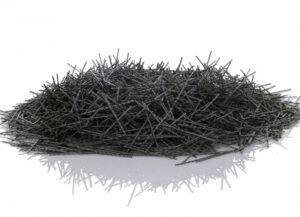Fibre-reinforced composite materials have already proven themselves in numerous places around the world.
Carbon fibre-reinforced plastics have significantly better properties than their steel-made ancestors. By now, they have taken the lead in the world of building high-end cars, and Formula 1 couldn’t even be imagined without them.
Concrete is following the same path, but the development in this industry is happening at such a speed that we can’t even imagine it. Fibre-reinforced concrete is just one of these.

Already, they can manufacture “smart” concrete capable of self-healing: microcracks formed during freeze-thaw cycles are automatically filled with the help of an additive, preventing the formation of larger fissures.
Concrete is generally perceived as an eternal stone-like material, but this is far from true.
Concrete is a very rigid material and easily breaks under bending forces. This is why reinforced concrete was invented: steel structures embedded in the concrete significantly increased its flexural and compressive strength.
One disadvantage of reinforced concrete is corrosion, and another is that it does not affect the entire cross-section of the concrete. So, during the setting time of fresh concrete and during freeze-thaw cycles, small cracks develop on the concrete surface, allowing water penetration, which further enlarges them: tiny cracks grow into large fissures.
When the concrete steel is exposed to moisture and oxygen, concrete corrosion accelerates, and within a few years, it can produce the results seen in the image above.
What can we expect in the future?
The high-performance fibre-reinforced concretes made of polypropylene, which began their conquering journey a few decades ago, are clearly the concretes of the future. In the precast concrete stands of the Nagyerdei Stadium in Debrecen, they have completely replaced the shear reinforcement, leaving only the tension straps.
You can also replace the concrete steel mesh in home concrete work, in certain cases. Check it out here:
ArmoTec is such a material. Not only is it corrosion-resistant, but it also affects the entire cross-section of the concrete, preventing cracks during setting, and withstands movement due to thermal expansion cycles over the years when made with ArmoTec.
As a result, the concrete becomes much more durable, thus avoiding cracking.
So far, fibre-reinforced concrete has mainly been used in industry, but now it is readily available for home concrete work as well.
We created this website to allow anyone to order the necessary macro fibres for concrete work from home, and within two days, they can already prepare durable, incredibly strong concrete. Quickly, easily, and at a favorable price.
Levente Siposs
Renovation Expert
Dedicated Advocate of Long-lasting Solutions







